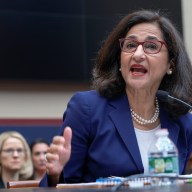The Department of Education announced final regulations Friday aimed at makingit easier to get federal student loan forgiveness if your school misleads you or your college closes. Most of the new rules are effective July 1, 2017, but some take effect Nov. 1. That should be welcome news forborrowers who formerly attended a for-profit school owned by now-defunct Corinthian Colleges. Corinthian filed for bankruptcy in 2015 after the Education Department fined the company for misrepresenting its job placement rates. Some former Corinthian students have already been approved for forgiveness under existing regulations known as “borrower defense to repayment,” but many more likely qualify under both the old and new regulations. What is borrower defense?
Under existing borrower defense rules, you can apply to get your federal student loans forgiven if you believe your college defrauded you in some way. Currently, state law determines whether those who make borrower defense claims actually qualify for forgiveness. Effective July 1, 2017, the new rules create a federal standard for those claims. Although the regulations have existed since 1995, few people applied for borrower defense forgiveness until recently. In the fallout after Corinthian’s collapse, tens of thousands of former students filed borrower defense claims. So far, about 16,000 former Corinthian students have been approved for borrower defense forgiveness, and almost 8,000 have been approved for forgiveness under another regulation known as “closed school discharge.” With thousands more still awaiting relief and otherslikely unaware they may qualify for this type of forgiveness, the Education Department electedto overhaul the system for handling more borrower defense claims. » MORE: What students can do when for-profit schools close
New rules that will help former Corinthian students
To help former Corinthian students currently seeking forgiveness, the department aims to implement certain rules before the full regulations take effect next year. They include:
– Eligible borrowers with federal Perkins loans or Federal Family Education Loans can get borrower defense forgiveness if they consolidate their federal debt first; effective Nov. 1. Smoother debt relief process for future borrowers
Other parts of the new rules are effective July 1, 2017, but the department believes they may inform the borrower defense process for all borrowers, including former Corinthian students. They include: – A federal standard for providing borrower defense relief. By this standard, you’re eligible for borrower defense forgiveness if your school breaks its contract with you; gets a court judgment against the educational services that your loan paid for; or “substantially misrepresents” information about its services or its graduates’ outcomes. How to seek borrower defense forgiveness
The department is still working to finalize aform that borrowers willuse to apply for borrower defense forgiveness. In the meantime, you can apply via email by sending your claim to FSAOperations@ed.gov or by mailing your claim to U.S. Department of Education, PO Box 429060, San Francisco, CA 94142. The borrower defense page on the Federal Student Aid website has a list of information you should include, such as documentation to prove your former enrollment and details about your school’s misconduct or legal violations. After you apply for borrower defense forgiveness, your federal student loans will be placed in forbearance until your claim is resolved, unless you request otherwise. That means that you won’t be required to make monthly loan payments, but your debt will continue to accrue interest.In many cases, the debt relief you get through closed school discharge or borrower defense forgiveness will not count as income for tax purposes. Teddy Nykiel is a staff writer at NerdWallet, a personal finance website. Email: teddy@nerdwallet.com. Twitter: @teddynykiel. The article Your Student Loan Paid for a Shady School? New Rules May Bring Relief originally appeared on NerdWallet.
– Eligible borrowers who were enrolled in a college that closed in November 2013 or after and who haven’t enrolled in another school within three years will get automatic federal loan forgiveness. This will be implemented “as soon as operationally possible,” according to a department news release.
– Students who used Pell Grants to pay for a school that closed can have their Pell Grant eligibility restored. There are typically limits to the amount of Pell dollars students can get overtheir lifetime. There’s no timeline on when this will happen; the department said it’s “still exploring the operational changes required to implement this policy.”
– A process to give student loan relief to groups of borrowers if the department identifies widespread misrepresentation.
– Regulations that make it easier for students to sue their school. For instance, colleges will not be allowed to forbid students from filing class action lawsuits, nor will they be allowed to require students to pursue an internal process before taking an issue to court.
















